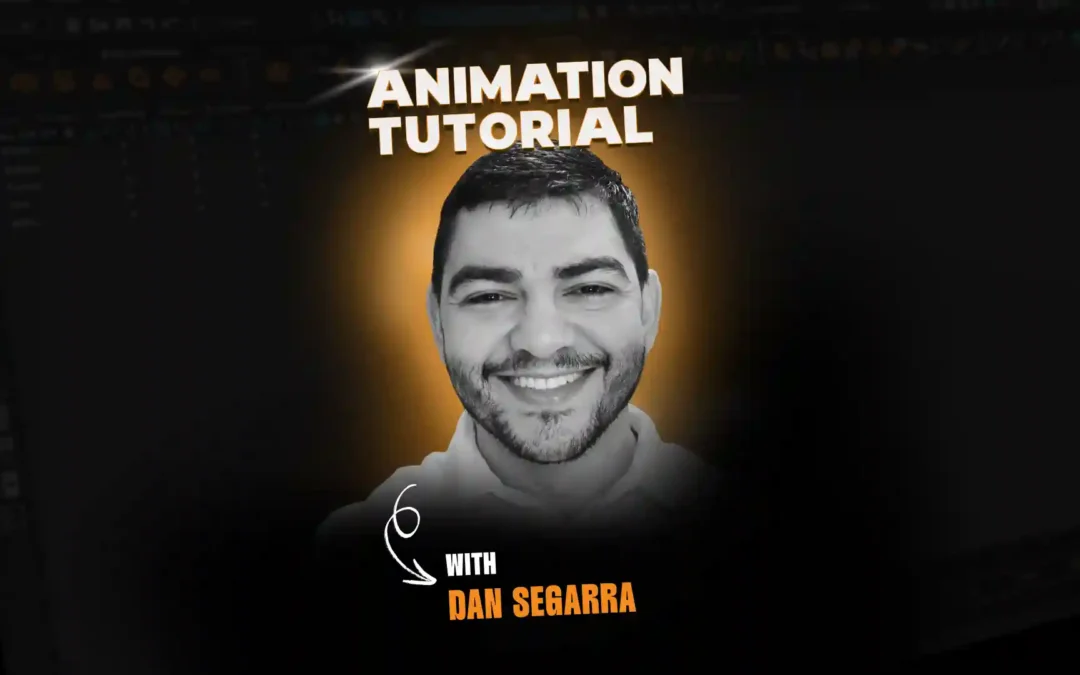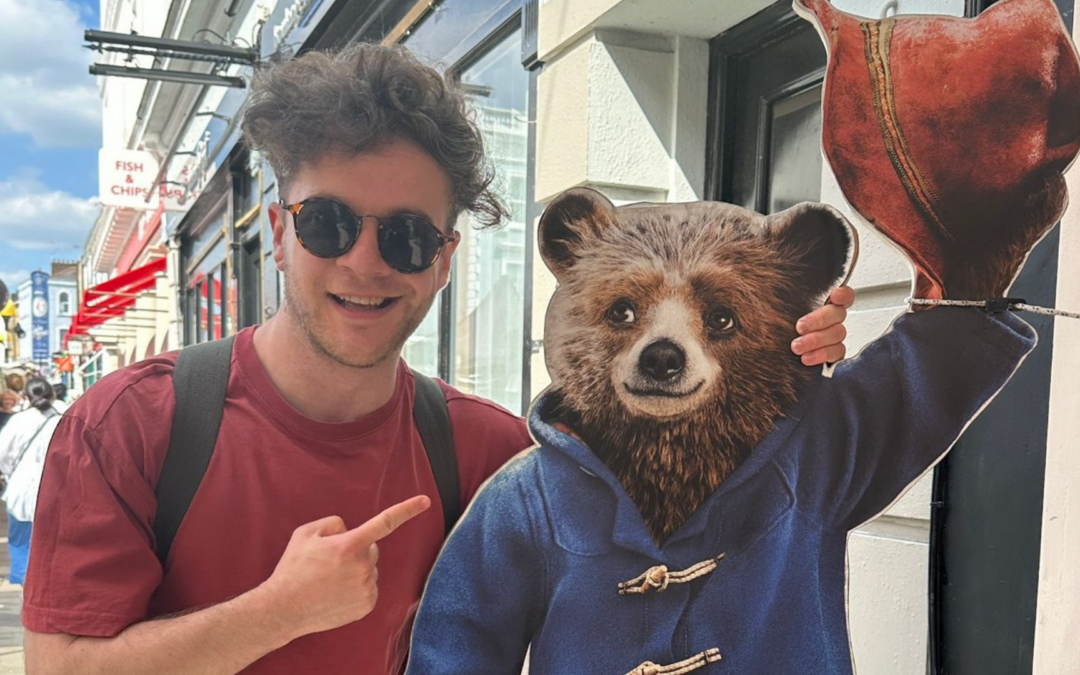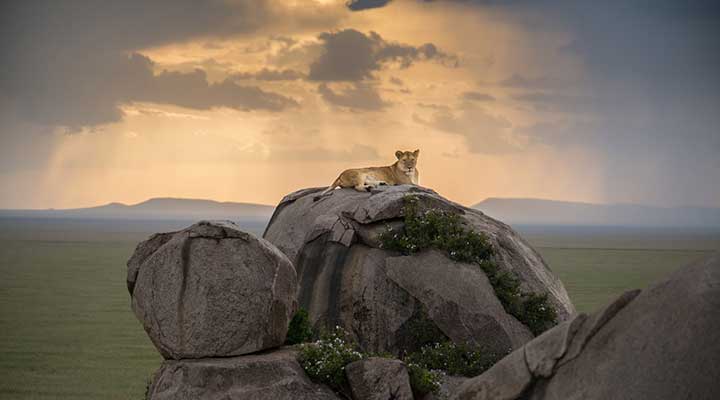
Get inside the mind of one of our veteran animators and mentor, Leigh Rens. Leigh Rens is originally from South Africa and gives us simple tips on how to approach creature animation. Read, learn, and unleash your inner creature awesomeness!
– The Animation Mentor Crew
The first thing that comes to mind when animating creatures is Nature with a capital N – be it creatures, environment and/or the elements. It all goes together for me and humbles me to a point of having great respect. I don’t know if it’s because I grew up on an African farm for a bit, or because I studied nature to imitate it, or because like most everyone I’ve seen the power and scale of nature in the oceans, mountains and forests, and have come to admire the creatures that live, overcome and are part of it.
I would be amiss however if I make out like I’m this big nature guy. Like everyone most of my animal frame of reference comes from pets, the odd visit to a zoo or animal park. And herein lies my point – how are we to come up with something that is gonna grip the audience, if our audience has a similar level of experience when it comes to animals. On one hand this is great because animals are super popular, the pet industry is said to be bigger than the animation industry and we all know that puppies and kittens have attained star status on the internet. On the other hand we will need to expand our knowledge and understanding of creatures if we are animate them with conviction.
The following basic recipe seems common to many creature animation situations. Below I’ve included some of the why and how of this workflow.
- Path of Action
- Scale
- Energy
- Foot Plants
- Tracking
Path of action, for creatures it’s a sine wave, its all over everything in nature. The line of action of the body will flow thru this path line and shape the pose. Think of the shape of the spine through the tail as being a different cut section of a sine wave for each pose as it moves along the path of action.
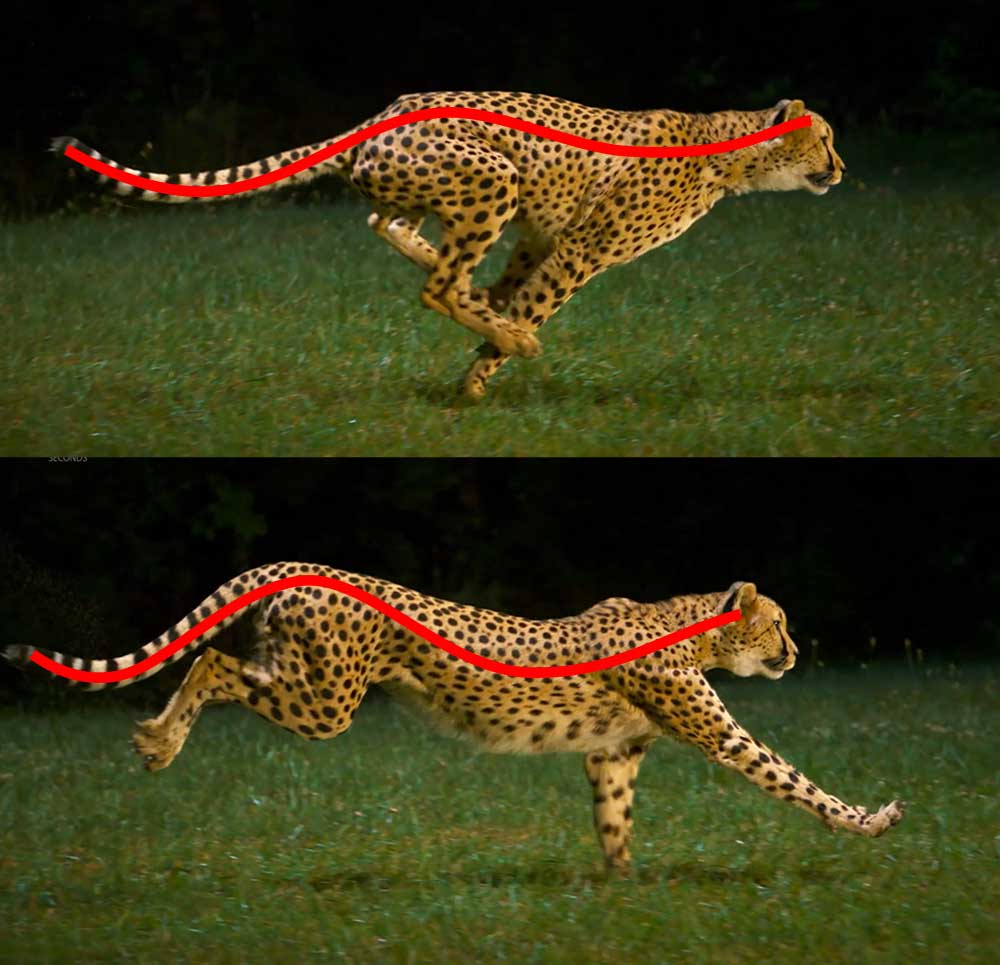
Next is scale, how large is the creature. This will determine the length and speed of its stride, etc.
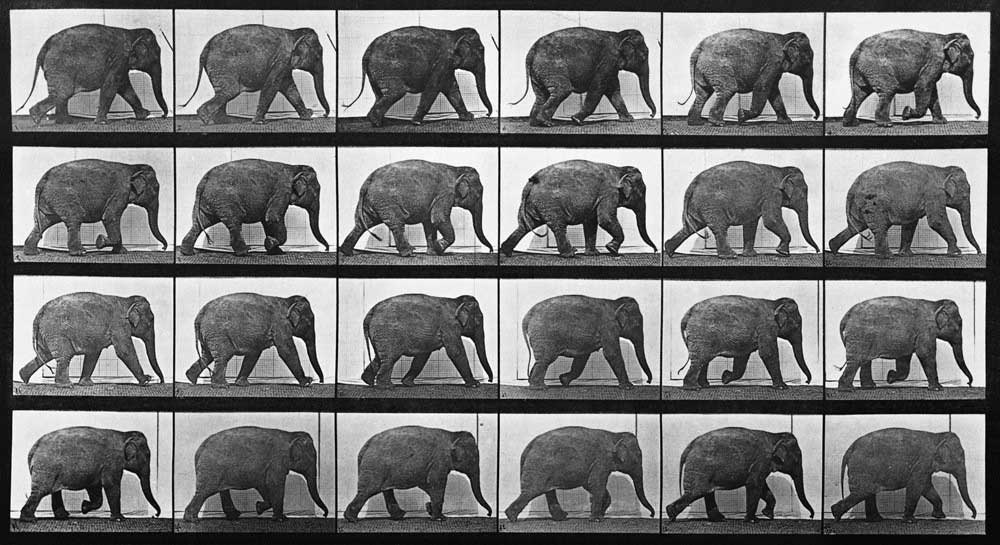
Strides of an elephant – Muybridge
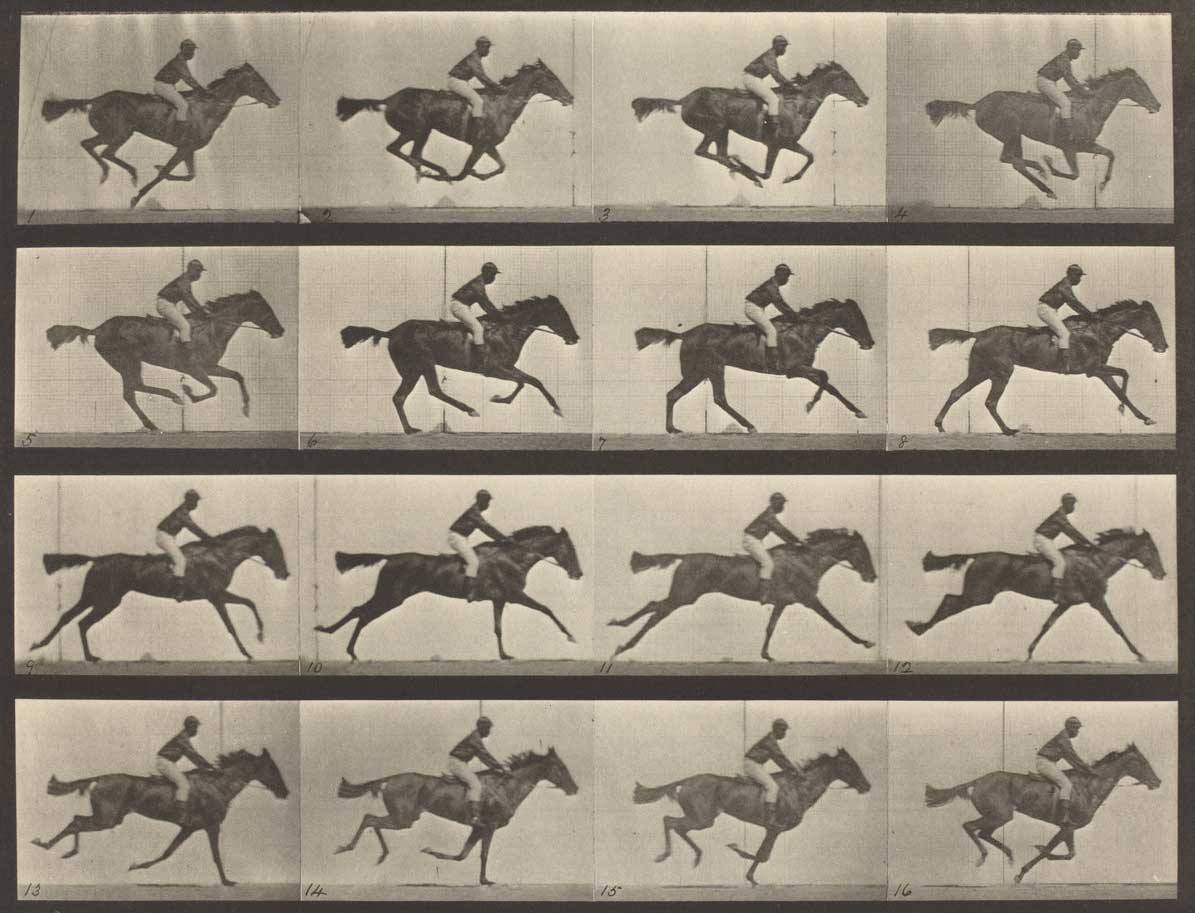
Running gait of a horse – Muybridge
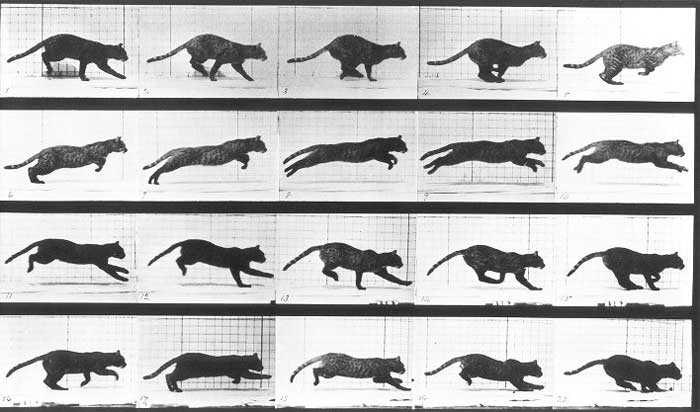
Leopard run – Muybridge
Energy, here I use the visual of the bouncing ball. For creatures you use three main masses (balls), one each for the hips, chest and head. Varying the opposing action of these three main areas holds the magic of how an animal changes stride.
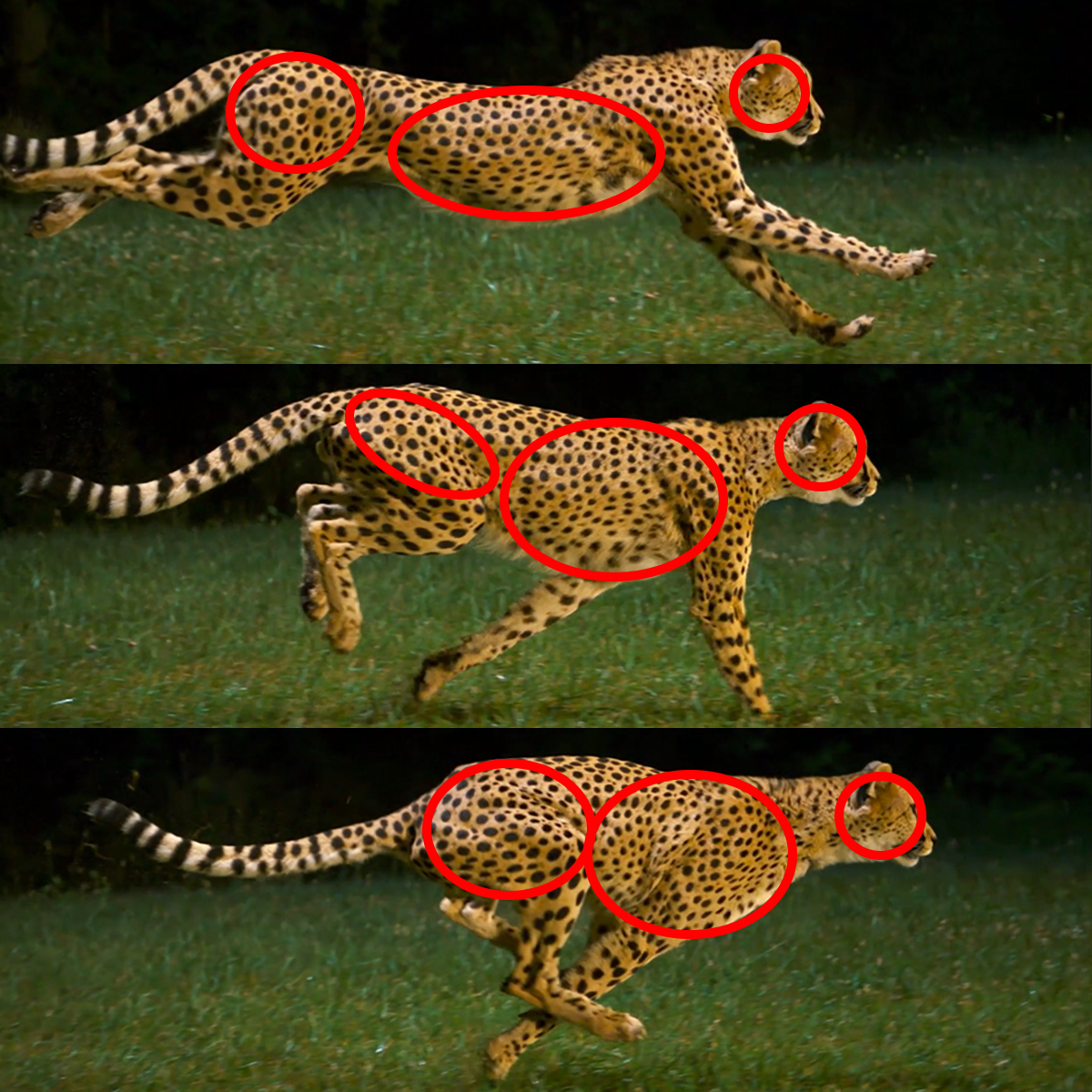
Cheetah stride
Lay in the foot plants. Keep the fold of the legs simple, see them as structures. The top three joints maintain a Z and the ankle-foot does a reverse shape whip action as it shoves off after the leg has reached the end of its stride.
Amazing slow motion reference of a cheetah running
Adjust the “tracking” or width of the feet placement.
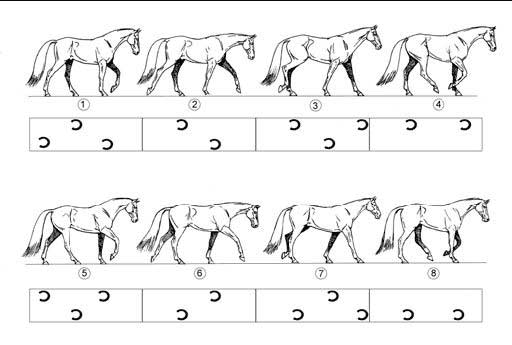
Spacing between the horse legs for each stride
That should cover it for the most part, armed with this basic recipe and a good piece of reference, you should be able to take on some animal locomotion!
However… if I add some deeper knowledge I can begin to flavor this locomotion into more of a performance. Take the sine wave I mentioned, if I begin to understand this as a path with timing and spacing – all of sudden I have amplitude of energy and frequency of the of the foot pattern… and here is my big idea behind this whole bit of writing. Nature is pattern, every creature has its own pattern of movement, a signature of sorts and this is based on way more factors than a simple four legged walk cycle. Missing this concept would be like saying the only bounce a ball can make is the average one (in an animation exercise), but what about all the other kinds of bounces a ball can achieve? Always remember that you want to avoid just animating an averaging of motion, and instead find areas to add flair and exaggeration, while also varying up your timing. This is the spice that really helps to bring your animation into the realm of performance, and gives your characters life.
Inspirational Creature Reference
Its with this thought I leave you with some pics (below) and a link to my favorite place to go and regain my sense of wonder about all things creature!
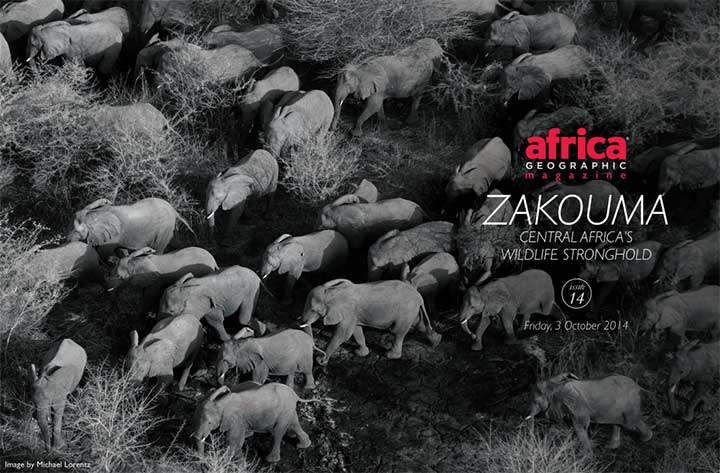
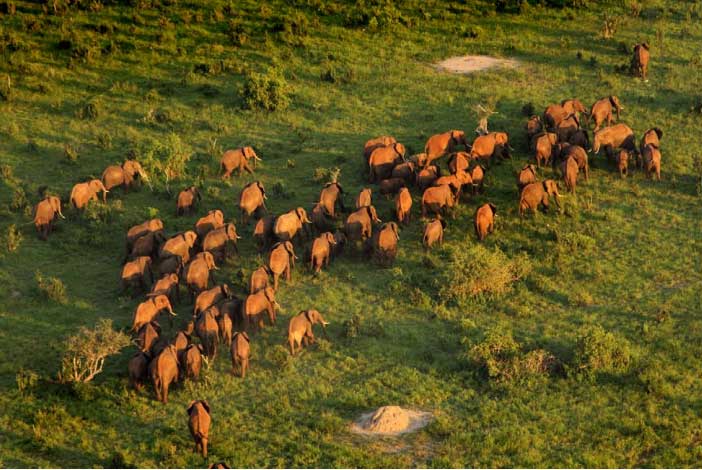
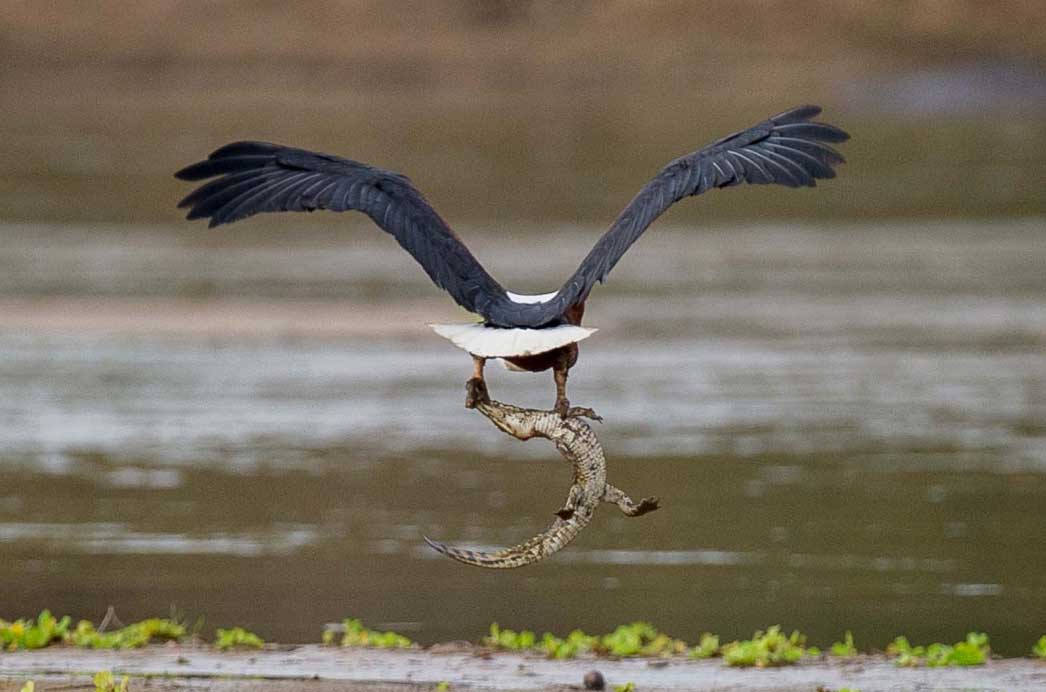
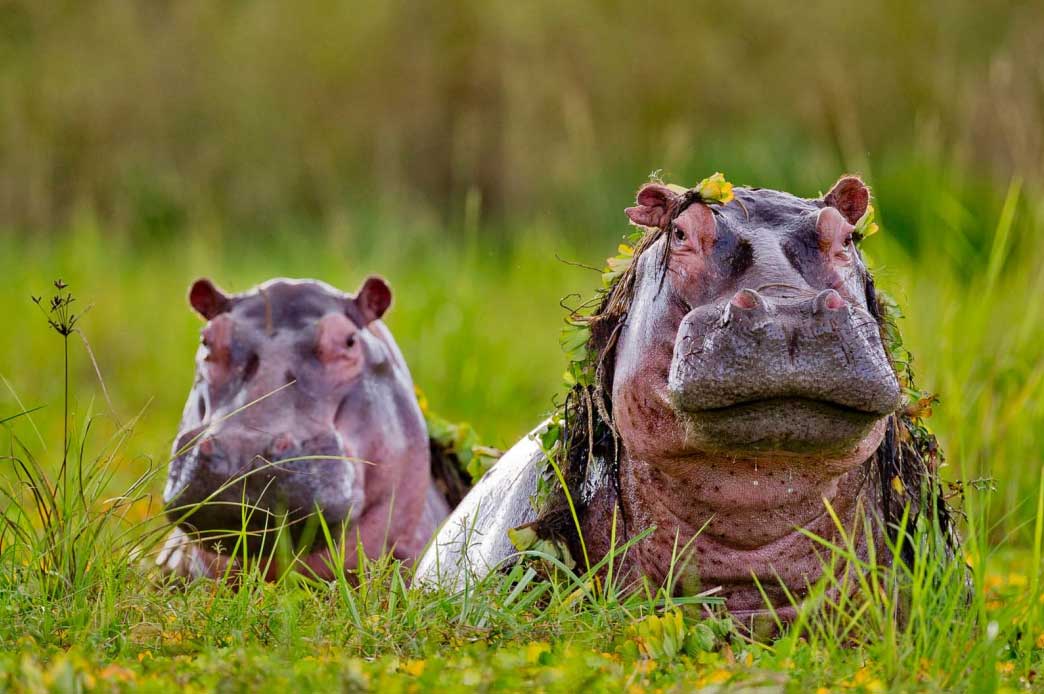
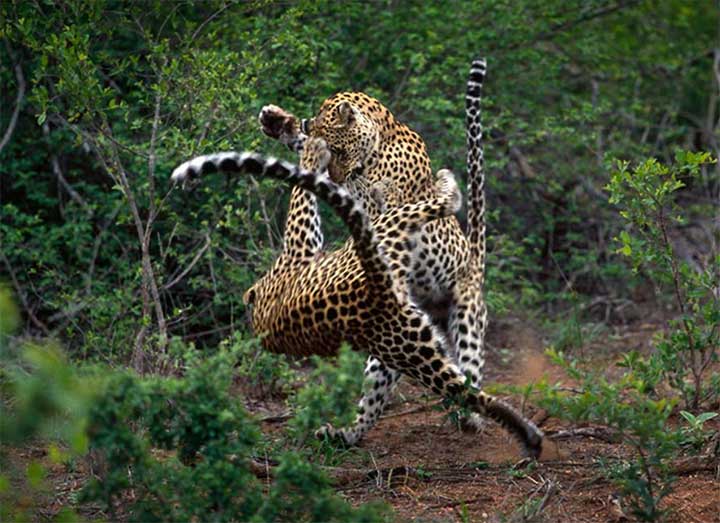
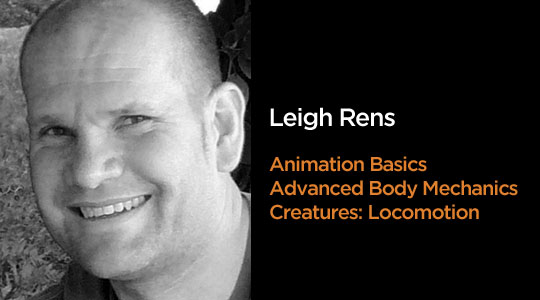
Leigh Rens is a 15 year animation veteran. You can see some of this work in the new Angry Birds Movie, Percy Jackson: Sea of Monsters, Mission: Impossible – Ghost Protocol, and Rise of the Planet of the Apes . He is also a veteran mentor at Animation Mentor since 2007. He’s taught Body Mechanics, Advanced Body Mechanics, Introduction to Acting and is currently teaching Creatures Locomotion.
Related Articles:
6 Animation Tips Every Creature Animator Should Know – Nicole Herr
How to Animate Quadruped Walk Cycles with a Jurassic World Animator – Steve Cady
Polishing Dozer: Creature Animation Demo with ILM Animator – Peter Kelly
Top 3 Reasons You Want Creature Animation on Your Demo Reel – Shawn Kelly
